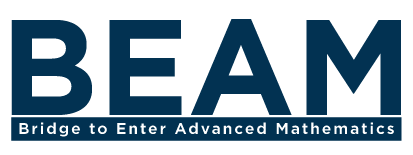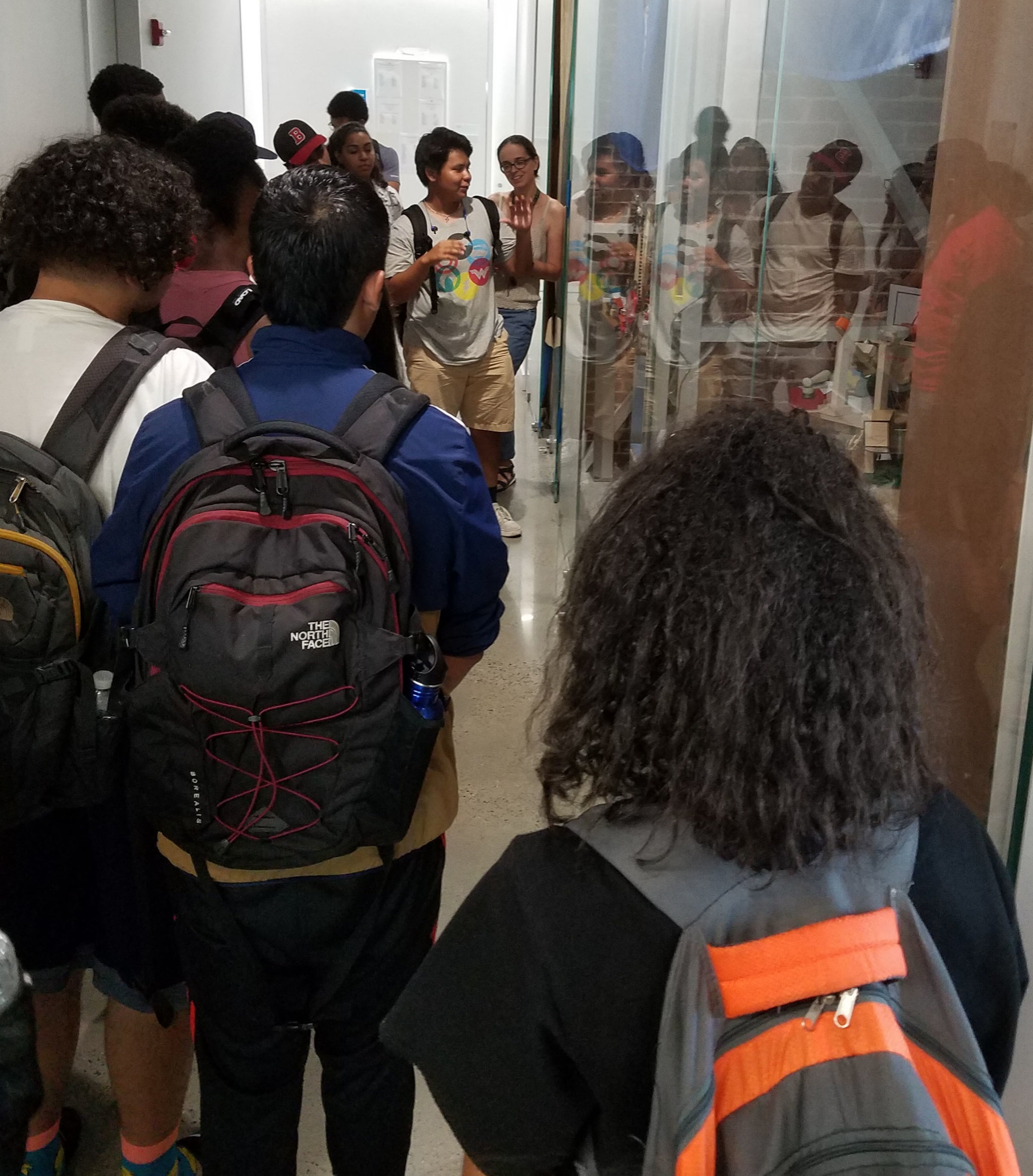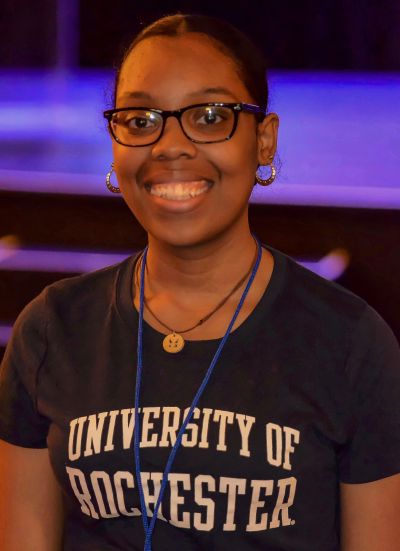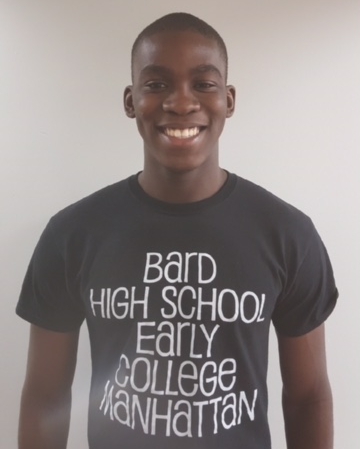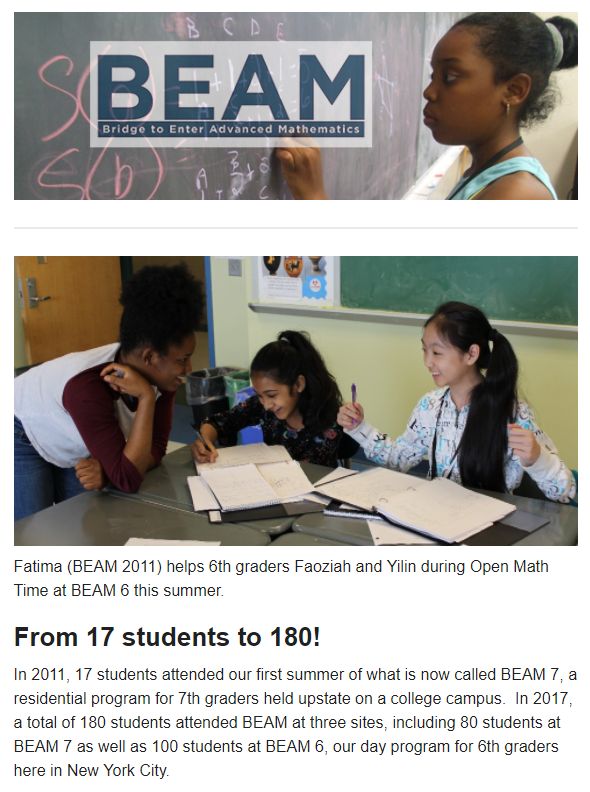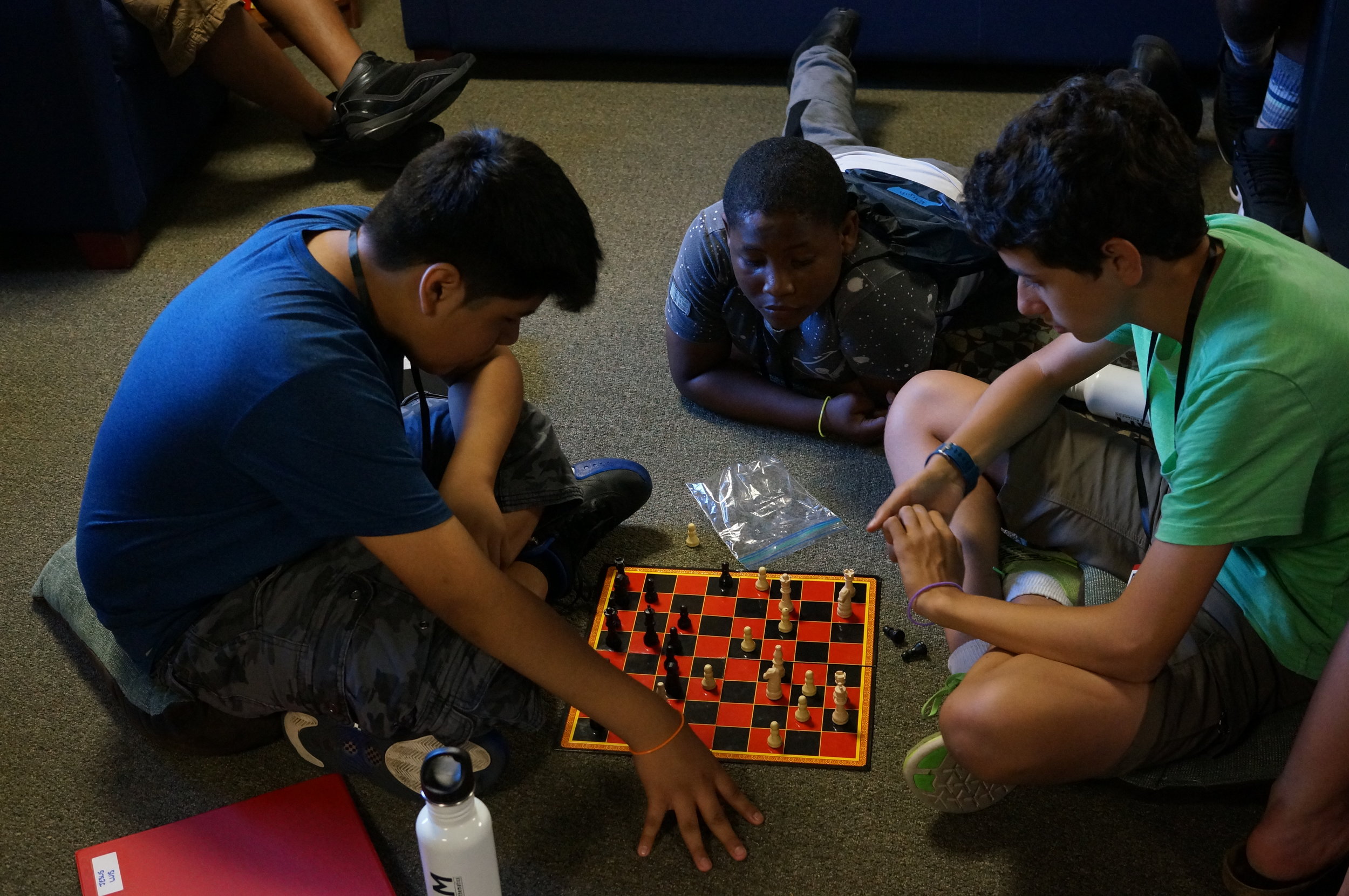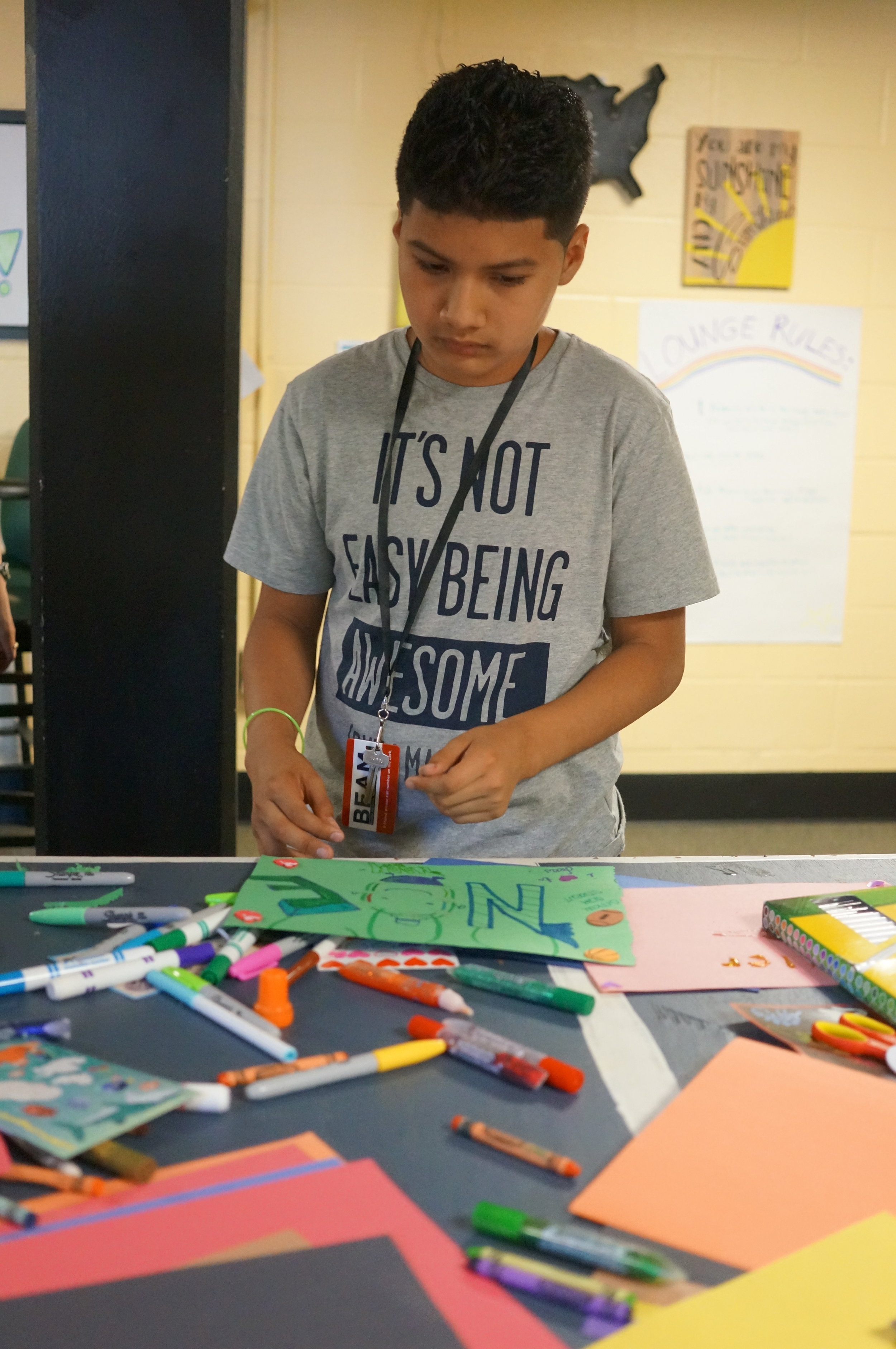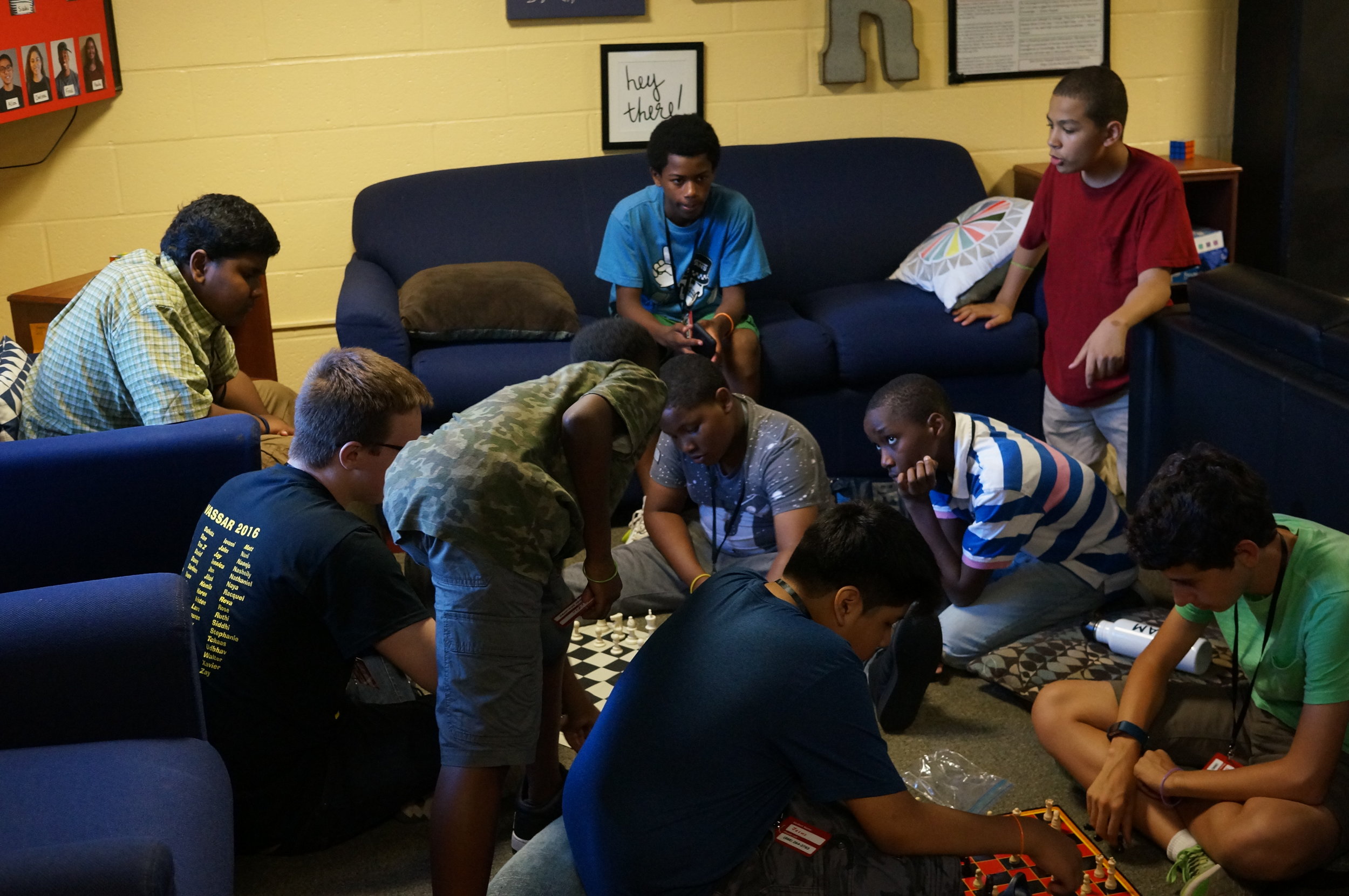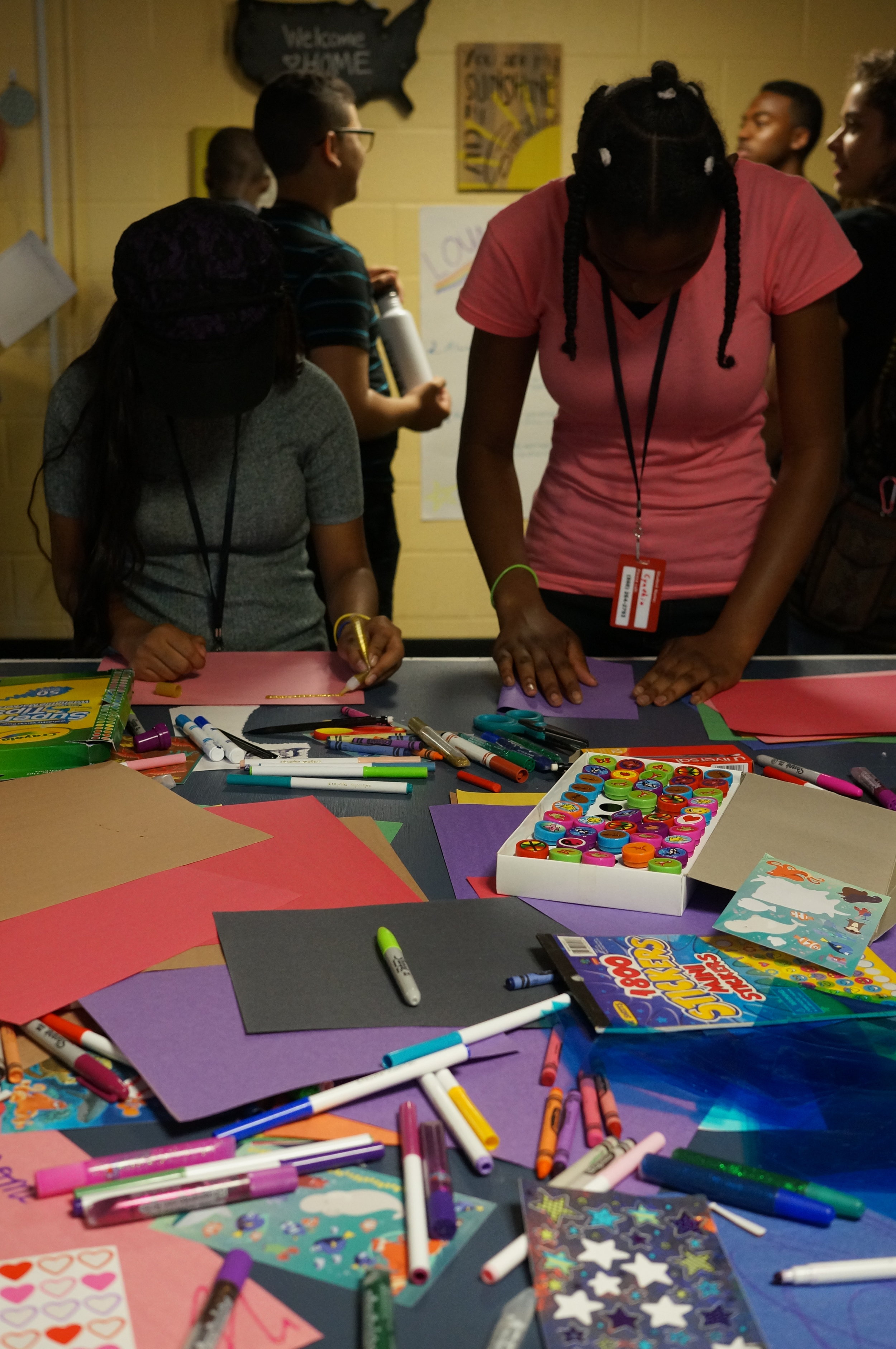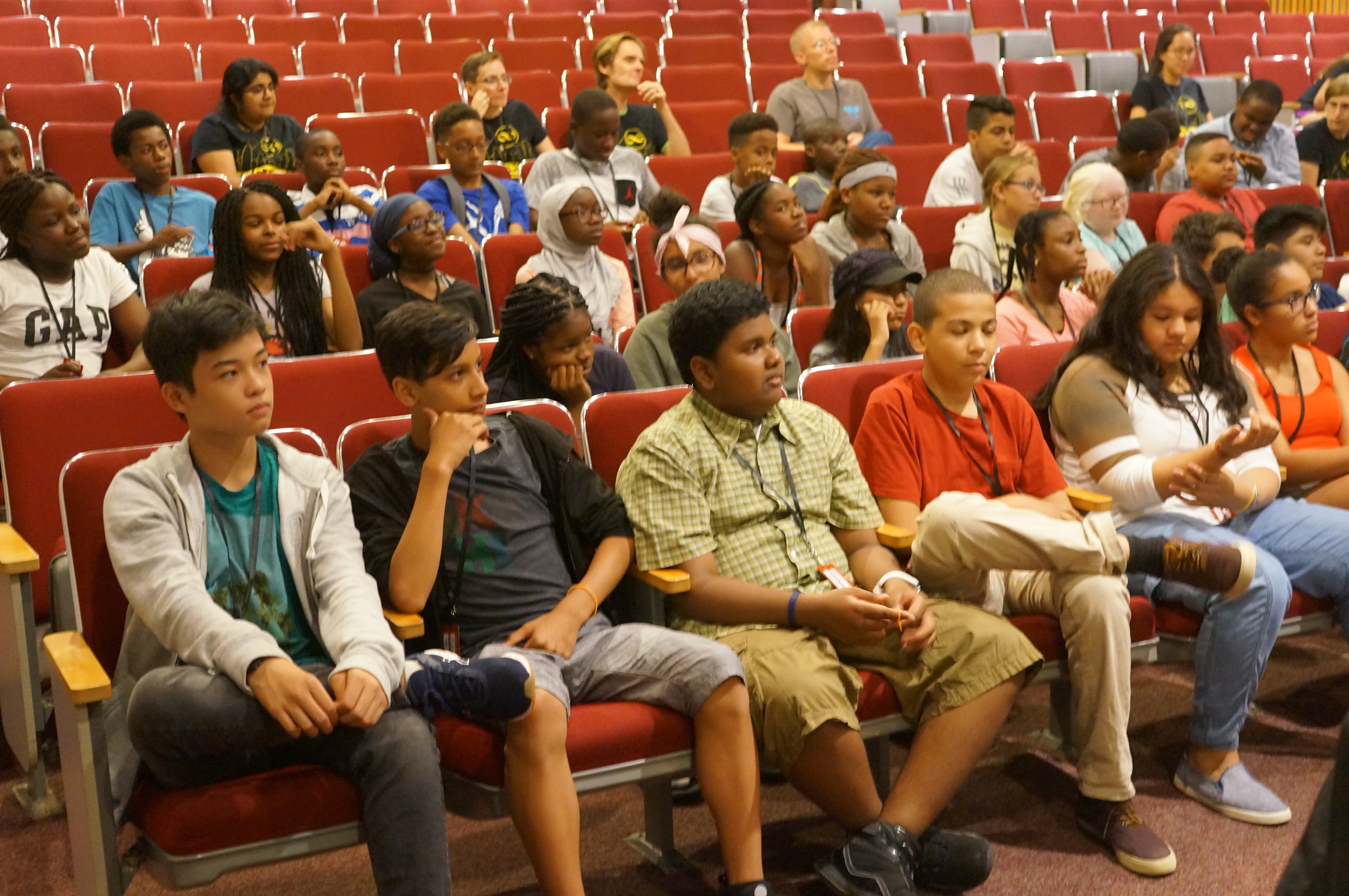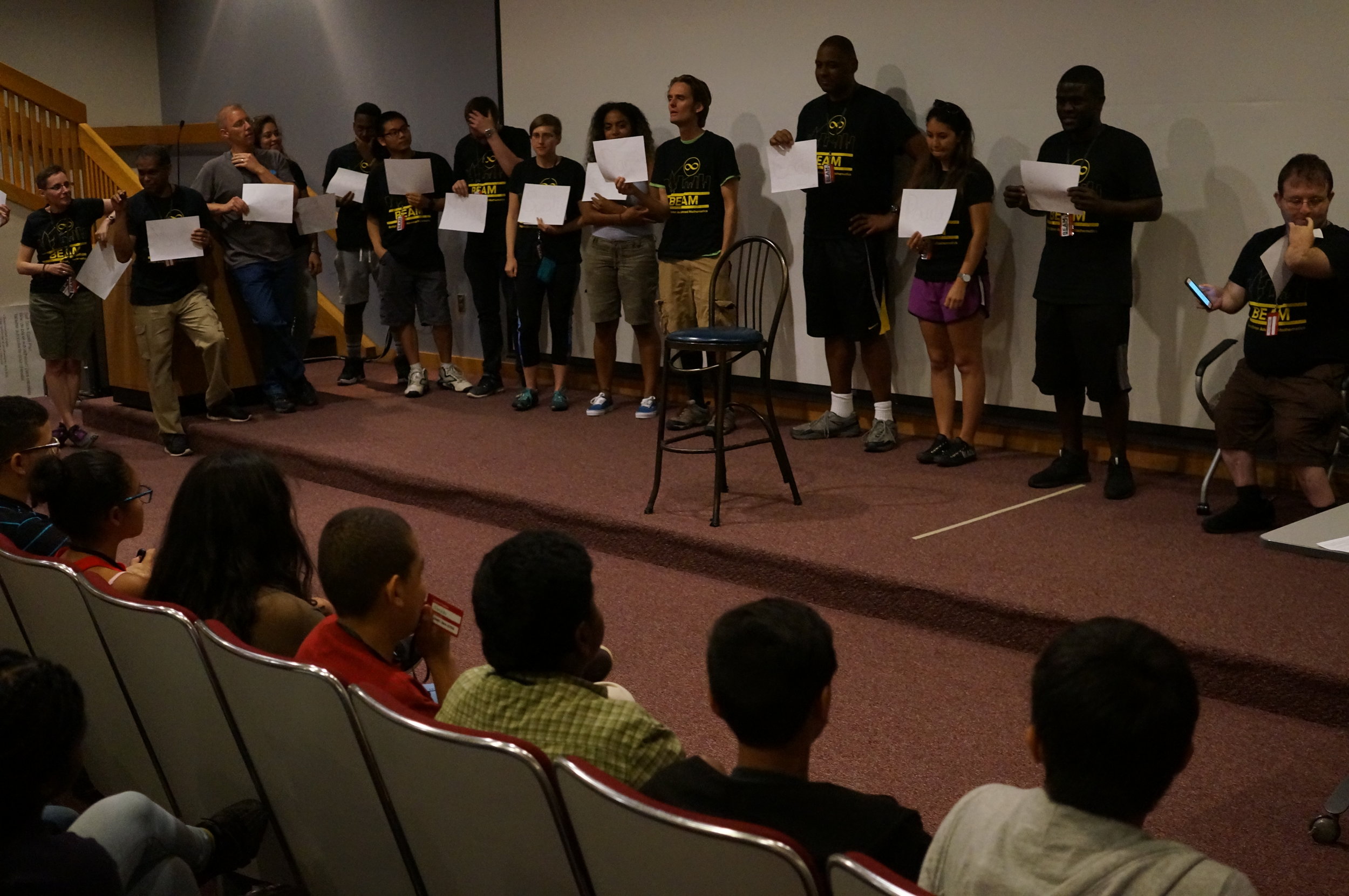BEAM students and families gather for the summer program presentation.
After spending two summers at BEAM, what do BEAM students do next? They might want a summer break, staying home or traveling with their family for vacation. But many students want another productive thing to do with their time! Each winter, we encourage our alumni to apply for summer programs to help broaden their knowledge, explore enriching learning experiences, and spend their break in a meaningful way. This is especially part of BEAM’s mission to prepare under-served students for future STEM careers. We aim to support students by helping them to applying to various STEM orientated summer programs, and our unscientific surveys of STEM professionals prove what the BEAM audience already knows: summer preparation in middle school and high school opens the door to STEM success in college and beyond.
BEAM alumni Teo and Jennora share their experience from summer programs they have attended.
On January 26th, BEAM students gathered at NYU’s Courant Institute for the annual Summer Program Information Session. This event’s main focus was to start the process of selecting summer programs and preparing summer applications. The information session began with a presentation highlighting the importance of applying to summer programs and how to go about the application process. We also had a panel of four BEAM alumni who answered questions and discussed their experience in different types of summer programs. After hearing about the different options, students broke out into groups by grade in order to review a list of their personalized summer program recommendations. As the beginning of the year goes by, we encourage our students to start their applications as soon as possible in order to give themselves the best opportunities. Overall, the information session pushed students to start thinking about their pathways towards STEM careers in addition to giving students the chance to hang out with the BEAM family.
BEAM students: it’s not too late to apply to amazing opportunities for summer 2019! Contact your year leader to learn more.
